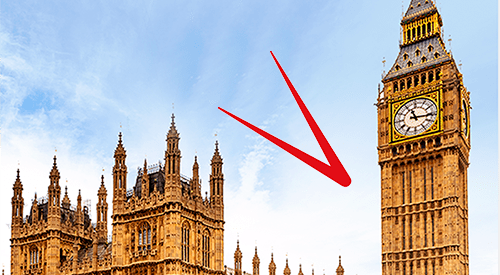“There’s been a strong focus on balance sheet management in government over the last few years,” says Sunderland. “The UK government had a balance sheet review, which has been key in driving that agenda forward.”
Sunderland’s team is responsible for producing the whole of government accounts, but he points out that what is useful about the balance sheet review is that it takes a broader and more holistic view of the numbers. “It is very easy to see a set of accounts as being the final position on the balance sheet, but certainly – from a public finances point of view – the whole of government accounts is only one piece of the puzzle. You need a broader spectrum of information to make really sound balance sheet management decisions, and that’s why, for example, we’ve created the Contingent Liability Central Capability to look at the flow and stock of contingent liabilities,” he says.
Sunderland points to the need to understand exposures and risks on the balance sheet – which are not always recognised or reported on under accounting standards – but also, in the wider public and fiscal management space, you need a forecast. “You need to have a sense of what is on the horizon that is going to impact upon the balance sheet. This is really important for fiscal management. And that is why the Office for Budget Responsibility (OBR) is so important as an independent fiscal forecaster,” he says.
“Recently, the OBR has made a commitment to move into forecasting the balance sheet. It is trying to develop forward-looking measures to understand, not only the annual deficit, but also to think about broader measures in relation to the balance sheet. That links with the Office for National Statistics’ (ONS’s) commitment around producing a broader range of balance sheet measures. This means not just looking at public sector debt but also looking at public sector net worth.”
The aim is to bring together forecasting, statistical and accounting information to deliver a more holistic view of public sector finances and, therefore, the likely impact of policy decisions. The aim is to achieve a much richer picture of public sector finances.
However, that is not to say that wider economic concepts and measures won’t continue to be valuable. Sunderland points out that it’s still important to consider the public sector balance sheet relative to the size of the economy. “Going forward, the government is not just seeking to provide the fullest transparency on the level of debt issued, but also what sits on the top part of the balance sheet, in terms of assets. GDP continues to be an important reference point for assessing the scale of assets, liabilities and debt, as it is an indicator of the size of the economy as a whole and it is a benchmark that is used internationally,” he says.
“Ultimately, the size of your economy has a big impact upon your ability to raise tax revenue, and therefore your capacity to fund liabilities going forward.”
Within HMT, there is a separate team that leads on balance sheet management. That team sits within the fiscal and economic part of HMT while Sunderland’s team sits within the public spending part, but there is close interaction between the two. HMT teams engage with the OBR and the ONS to consider the types of measures that would be useful in the future to understand the government’s balance sheet in a more insightful way.
What is so valuable about this approach is that the OBR and the ONS are entirely independent organisations who make their own decisions free from any political influence – the OBR and the ONS have their own statutory remit.
In the final analysis, is the idea to get more bang for your buck out of public sector assets? “One of the things that the balance sheet review tries to do is to provide a framework for thinking about these questions. Are we trying to get more value out of particular assets? Are we holding different assets for different purposes? Do these assets perform different functions?” he says. “The balance sheet review sets out a framework through which we can separate different assets into different buckets and differentiate between policy assets, financial assets and commercial assets. Then we need to recognise that our objectives for those different portfolios of assets are different, and this can then inform our decision-making around them.”
In this age of information overload, what does Sunderland see as the role of whole of government accounts? Are they published too late? Is there an aspiration to publish them earlier and what is the role of the new Online System for Central Accounting and Reporting (OSCAR 2) tool?
OSCAR 2 is a new cross-government tool maintained by HMT and is considered critical in supporting government to manage spending allowable by government departments, devolved administrations and other government financed public bodies. It is used to collect multiple cross-government datasets, consolidate these datasets, and report (and publish) data for Parliament and other stakeholders and support Ministers in making informed decisions.
The financial, and in some cases non-financial, analysis produced via the OSCAR 2 tool is used by HMT, the Cabinet Office and HM Government to analyse financial forecasts, outturns, cash management and metrics on major government projects. Reports created via the OSCAR tool use a set of standard codes as this supports greater consistency of reporting and easier communication of information.
“We're hoping to extract benefits across all our processes,” says Sunderland, “but what is really exciting about OSCAR 2 is that it gives you all these different datasets, housed within the one system, and the possibility of bringing in other datasets.”
All of this is happening against a backdrop of recovery and the impact of COVID. “What we're seeing in central government is at least a two-year recovery cycle to get the accounts back to a level of timeliness they had before, which means trying to hit that June/July window,” he says. After this recovery period, he is confident OSCAR 2 will also help us accelerate the production of whole of government accounts as well.
“That doesn't mean we get the data from people any quicker, but what it does mean is that, in effect, the processes which we need to go through are built into the system,” he says. “We need to move on from spreadsheets.”
“One of the challenges in managing the public sector balance sheet is having data that is rich and good quality to help give you insight,” he says. “But there is a positive feedback loop the more we use this data to inform policy, and the growing interest from many stakeholders in balance sheet management is really helping to drive the agenda forward.”
Insights special: Repairing public finances
ICAEW Insights takes a closer look at the efforts being made to repair public finances in the wake of the coronavirus pandemic.



